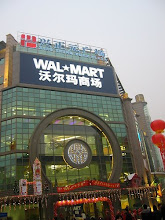
Wal-mart is known for their efficiency in the inventory management department. They run an EOQ system where their demand rates are continuous, frequent, and known. Wal-mart manages an efficient JIT system. The JIT system stands for the just in time inventory systems, which allows Wal-mart to have lesser inventory by having recurring orders. The problem with recurrent ordering is that it can result to extravagant ordering costs. Companies frequently miscalculate their ordering cost; in return can make it seem costly.

This is where Wal-mart shines because they run a flawless EOQ system which is the essential tool that tells them the ordering cost, holding costs, and demand. This system works well for Wal-mart because the ordering cost are low; therefore, it is better to let the suppliers hold on to the rest of the inventory.

The key to Wal-mart strategy in the inventory management is their EDI system which makes their ordering cost almost absent. EDI system is a electronic data interchange. This means that this system is used for electronic communication of business transactions between organizations. These business transactions include orders, invoices and confirmations. The EDI system entails direct computer to computer transactions into the sellers’ ordering system. Basically the sellers’ find out instantly when inventory is down.

Wal-mart has a no tolerance level where they place high demands on service from their suppliers. They refuse to buy in bulk so that they can keep surplus inventory to a minimum. The zero tolerance policy applies for late shipment. Companies like Wal-mart are demanding shorter lead time as well.
 Wal-mart is known for their efficiency in the inventory management department. They run an EOQ system where their demand rates are continuous, frequent, and known. Wal-mart manages an efficient JIT system. The JIT system stands for the just in time inventory systems, which allows Wal-mart to have lesser inventory by having recurring orders. The problem with recurrent ordering is that it can result to extravagant ordering costs. Companies frequently miscalculate their ordering cost; in return can make it seem costly.
Wal-mart is known for their efficiency in the inventory management department. They run an EOQ system where their demand rates are continuous, frequent, and known. Wal-mart manages an efficient JIT system. The JIT system stands for the just in time inventory systems, which allows Wal-mart to have lesser inventory by having recurring orders. The problem with recurrent ordering is that it can result to extravagant ordering costs. Companies frequently miscalculate their ordering cost; in return can make it seem costly.  This is where Wal-mart shines because they run a flawless EOQ system which is the essential tool that tells them the ordering cost, holding costs, and demand. This system works well for Wal-mart because the ordering cost are low; therefore, it is better to let the suppliers hold on to the rest of the inventory.
This is where Wal-mart shines because they run a flawless EOQ system which is the essential tool that tells them the ordering cost, holding costs, and demand. This system works well for Wal-mart because the ordering cost are low; therefore, it is better to let the suppliers hold on to the rest of the inventory. The key to Wal-mart strategy in the inventory management is their EDI system which makes their ordering cost almost absent. EDI system is a electronic data interchange. This means that this system is used for electronic communication of business transactions between organizations. These business transactions include orders, invoices and confirmations. The EDI system entails direct computer to computer transactions into the sellers’ ordering system. Basically the sellers’ find out instantly when inventory is down.
The key to Wal-mart strategy in the inventory management is their EDI system which makes their ordering cost almost absent. EDI system is a electronic data interchange. This means that this system is used for electronic communication of business transactions between organizations. These business transactions include orders, invoices and confirmations. The EDI system entails direct computer to computer transactions into the sellers’ ordering system. Basically the sellers’ find out instantly when inventory is down.




No comments:
Post a Comment